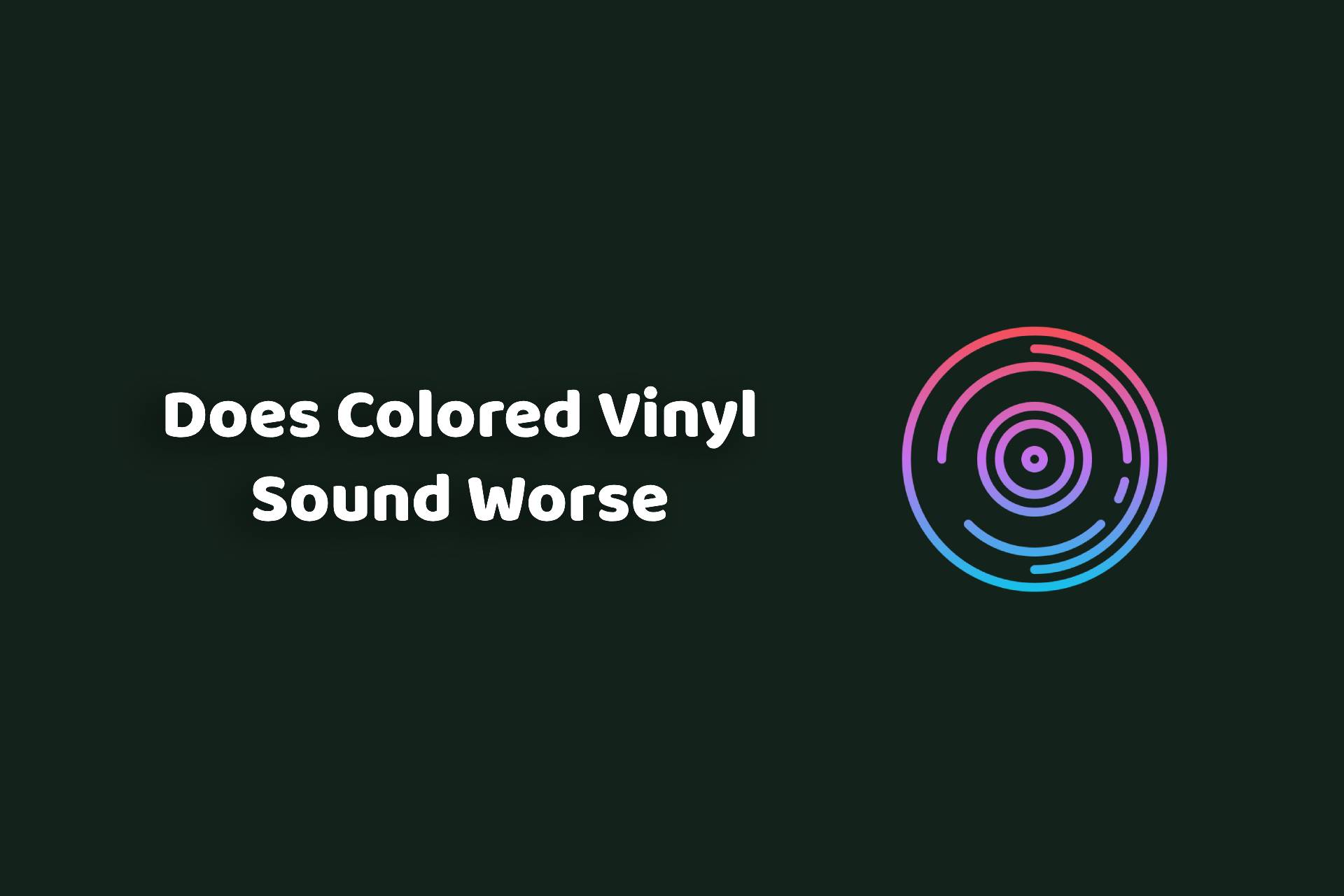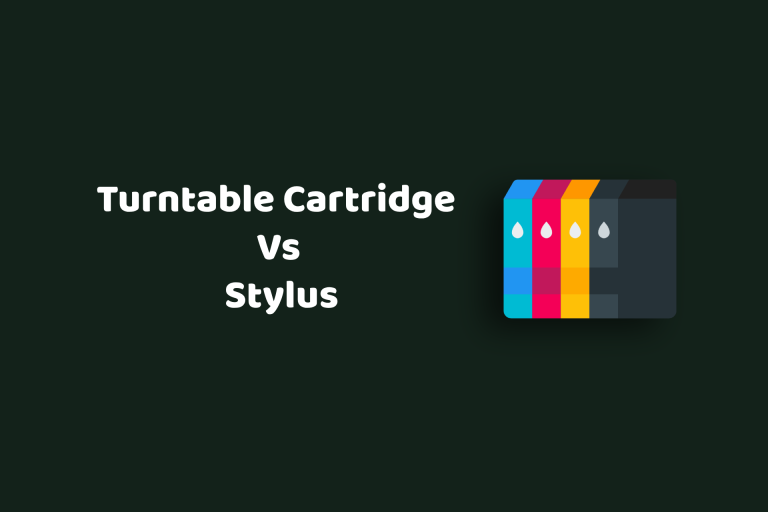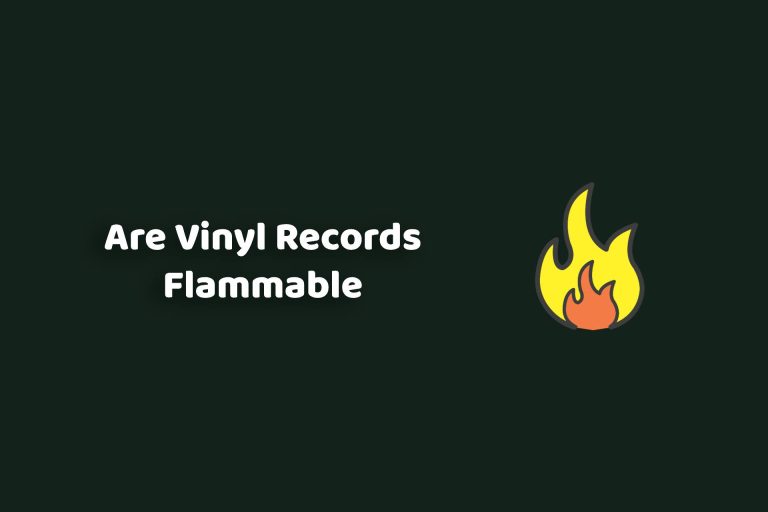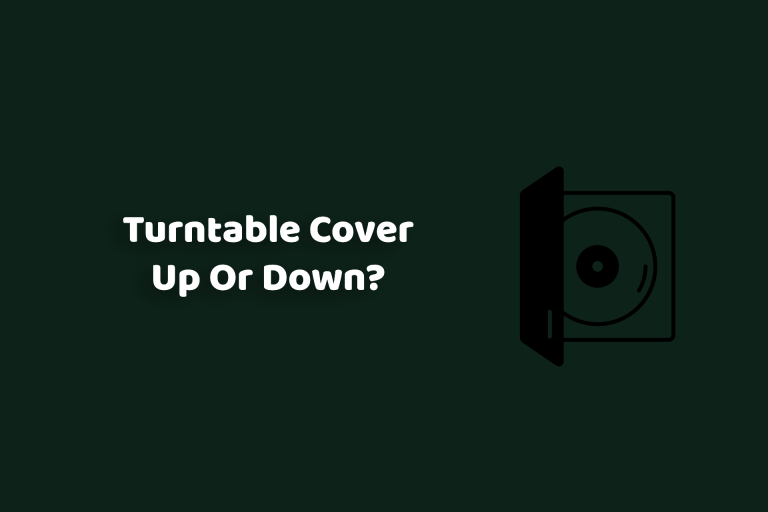Does Colored Vinyl Sound Worse?
Colored vinyl has grown in popularity over the last ten years. But the debate over its audio quality comparison with the classic black vinyl still continues among the music enthusiasts and audiophiles. Some claim that the coloured vinyl shows variations in sound quality as compared to the black vinyl, while others hold onto that any apparent change in the audio is insignificant.
If this piques your curiosity, continue reading!
What are vinyl records?
A vinyl record is a disc composed of the polymeric substance, polyvinyl chloride (PVC). In a pressing process, grooves are carved onto the record’s surface to store the audio recordings in the form of a spiral pattern. Upon playback, a stylus or a needle reads these grooves by vibrations to create a sound.
The classic black vinyl
Even after decades, black vinyl is still the most popular record choice for music lovers. It is widely used and is compatible with mass production techniques making it the industry standard.
For manufacturing black vinyl, PVC (polyvinyl chloride) is intentionally blackened by incorporating carbon black pigments. This pigment improves the vinyl’s resilience and uniformity.
The colored vinyl
The colored vinyl is manufactured by mixing polyvinyl chloride (PVC) with color pigments or dyes to change their color. This vinyl might be solid, transparent, or multicoloured. The colors can be used from the entire range of color spectrum including dark reds, yellows, and greens to more subdued shades of gold and silver.
A brief history of colored vinyl
The idea of colored vinyl is not entirely new; in fact, it is almost as ancient as the vinyl itself. Starting from the 1960s, artists across different genres utilized colorful vinyls to record their songs. The craze of colored vinyl reached its peak when rock bands began to release albums on colourful vinyls.
Colored vinyl design patterns
Some colored records even include distinctive colour patterns like splatter or marble effects, which increase the visual significance of the record transcending its purpose as a source of music.
Here are the top 3 trending patterns in colored vinyl:
- Splatter vinyl
The splatter vinyl is exceptionally captivating, abstract and displays a travel through a wormhole. These records contain numerous colored lines flashing out from the center.
- Galaxy vinyl
As the name implies, these vinyls have the appearance of galaxies. The galaxy pattern on the vinyl can be designed using opaque or translucent color pigments.
- Marble vinyl
Marble vinyls lends a sophisticated yet contemporary aspect to records. To get a marble impression, multiple granules are used before melting the vinyl cake, producing the marble patterns. They are not confined to the classic marble colours either. Blue, crimson, purple, and any other shade you may think of can be imparted with marble-like texture.
Comparison between Black vinyl and colored vinyl
Besides color, the primary distinction between black and colored vinyl is in their manufacturing process. The changes in the material properties among black and colored vinyl records have a significant impact on the sound quality.
Manufacturing Process
Vinyl records are created from PVC, which is inherently colorless. Titanium dioxide and other chemicals are added to this transparent substance to make it a solid color. Black carbon is frequently used to reinforce the PVC mix and provide the standard black color. Colorful dyes are used in place of black carbon to create any colored vinyl. These colors do not strengthen the vinyl as much as black carbon, although the difference is minimal unless errors are made during the manufacturing process.
Appearance
In contrast to the all-black vinyl records, the colored vinyls are visually appealing. Artists utilize a range of techniques to make coloured records appear attractive. Mono color records, vinyl with rainbow splashes, and galaxy-inspired patterns are some of the most trendy designs on coloured vinyls. Picture discs are also gaining popularity, on which artists copy the album image.
Collector’s point of view
In a survey by Statista, 24% of people purchase vinyl for the purpose of collection. Moreover, if you dig through a collection of any vinyl lover, most vinyl records would probably be black. However, the vinyl collection nowadays heavily relies on its appearance and tangible elements. Just as much as people care about the music, vinyl fans are fascinated with the artwork too!
The fact that coloured vinyl records are designed with attractive themes, aesthetic appeals, and sometimes limited edition releases, increases the collectors interests.
The impact of ingredients and technology on the sound of colored vinyl
Colored vinyl has the potential to sound as excellent as black vinyl, provided manufacturers take extra precautions to not make mistakes while designing them. The following are the main factors that can affect the sound of a colored vinyl rather than its colour:
- Quality of pressing:
Sound quality is greatly influenced by the manufacturing and quality control methods. High quality sound can be achieved from a well-pressed vinyl record regardless of its appearance, coloured or black.
- The art of mastering:
Another important factor that affects the sound quality is the mastering process. In this process, the audio is moved on to the lacquer master. The mastering engineer’s knowledge and focus throughout the process have a considerable impact on the final sound.
- Colorant use:
The vinyl’s colorant might have an effect on the sound quality as well. Because certain colorants tend to be more opaque like cadmium, cerulean blue, and all whites, they can affect the way sound vibrations pass through the vinyl. Nevertheless, there isn’t any conclusive evidence that colorful vinyl sounds worse or better than black vinyl.
- The playback device:
The music you hear from the vinyl is significantly influenced by the condition of the turntable, stylus, tonearm, and speakers. Any vinyl record may be fully enjoyed with top-notch playing equipment.
- Storage:
Over the years, the vinyl record’s sound quality may be impacted by handling and storage practices. The integrity of the vinyl’s sound may be maintained by properly storing them in a dry and cool place, away from sunshine and extreme heat.
- State of the vinyl:
A good sound quality also depends on the condition of the vinyl, such as cleanliness, and absence of scratches and abrasions.
Cracking the question, does colored vinyl sound worse?
In the beginning stages of coloured vinyl manufacture, there were cases when sound quality varied due to the gaps in quality assurance practices and the utilization of lower quality pigments and dyes. Fortunately, as vinyl production processes advanced, these problems were largely dealt with.
So, today, we can confidently say that with the contemporary developments in vinyl pressing technologies the colorful vinyl records can preserve sound quality at par with the black vinyls.
Should you buy coloured vinyl?
Although colorful vinyls are prized for their beauty, collectability, and eye-catching appearance, music lovers can continue to enjoy listening to them without worrying about the sound quality.
It essentially boils down to the listener’s preference, aesthetics, and the search for a distinctive and colourful addition to one’s record collection when deciding between colored and black vinyl.
So, if you are a music enthusiast, who appreciates creativity, loves to exhibit your vinyl collection, and aren’t concerned by minute variations in the sound quality in rare cases, then coloured vinyl can be excellent additions to your collection.
Still not sure, what to buy coloured vinyl or the standard black vinyl? Contact Turntablely to know A to Z of vinyls.






